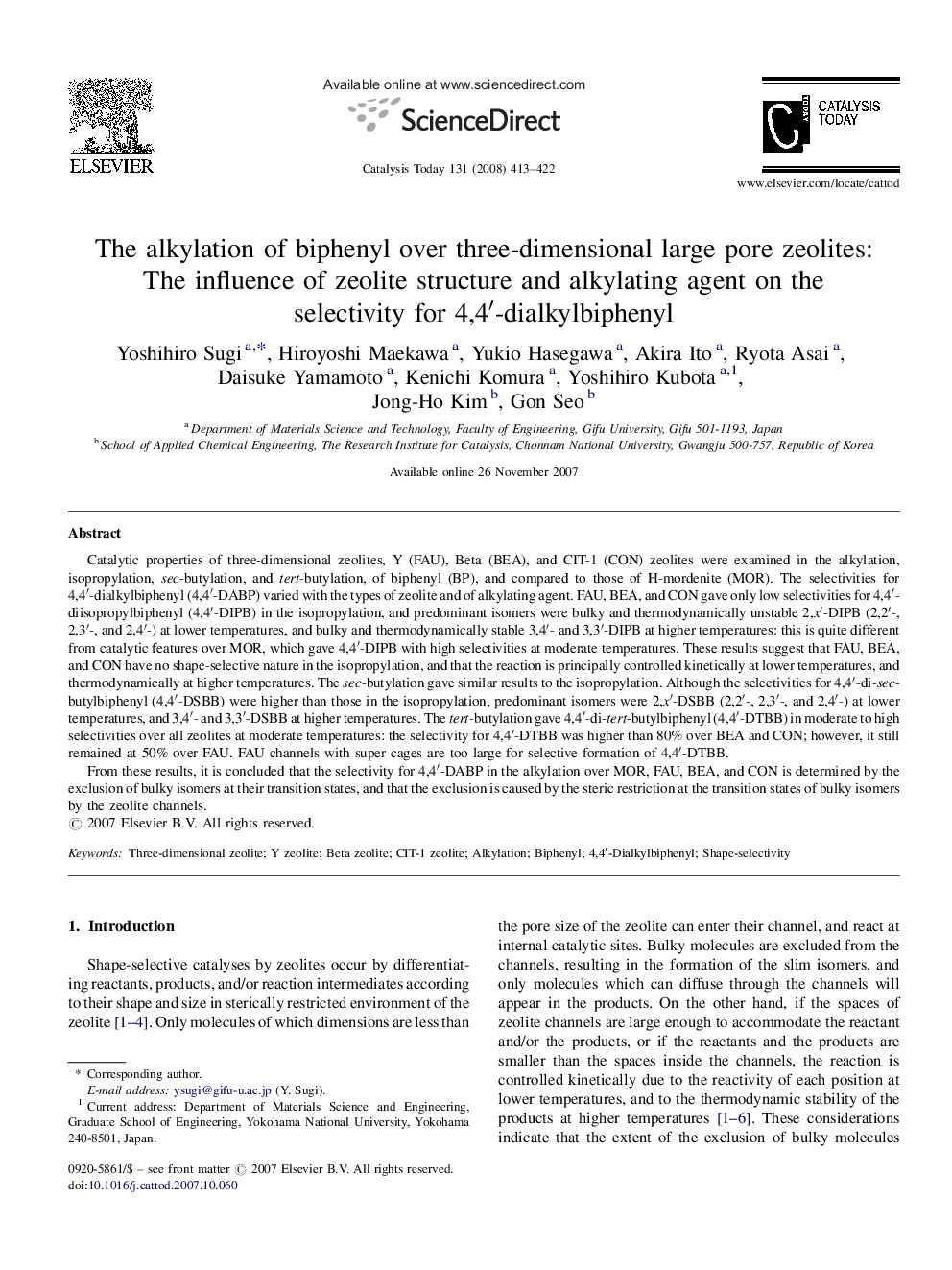| کد مقاله | کد نشریه | سال انتشار | مقاله انگلیسی | نسخه تمام متن |
|---|---|---|---|---|
| 57708 | 47128 | 2008 | 10 صفحه PDF | دانلود رایگان |

Catalytic properties of three-dimensional zeolites, Y (FAU), Beta (BEA), and CIT-1 (CON) zeolites were examined in the alkylation, isopropylation, sec-butylation, and tert-butylation, of biphenyl (BP), and compared to those of H-mordenite (MOR). The selectivities for 4,4′-dialkylbiphenyl (4,4′-DABP) varied with the types of zeolite and of alkylating agent. FAU, BEA, and CON gave only low selectivities for 4,4′-diisopropylbiphenyl (4,4′-DIPB) in the isopropylation, and predominant isomers were bulky and thermodynamically unstable 2,x′-DIPB (2,2′-, 2,3′-, and 2,4′-) at lower temperatures, and bulky and thermodynamically stable 3,4′- and 3,3′-DIPB at higher temperatures: this is quite different from catalytic features over MOR, which gave 4,4′-DIPB with high selectivities at moderate temperatures. These results suggest that FAU, BEA, and CON have no shape-selective nature in the isopropylation, and that the reaction is principally controlled kinetically at lower temperatures, and thermodynamically at higher temperatures. The sec-butylation gave similar results to the isopropylation. Although the selectivities for 4,4′-di-sec-butylbiphenyl (4,4′-DSBB) were higher than those in the isopropylation, predominant isomers were 2,x′-DSBB (2,2′-, 2,3′-, and 2,4′-) at lower temperatures, and 3,4′- and 3,3′-DSBB at higher temperatures. The tert-butylation gave 4,4′-di-tert-butylbiphenyl (4,4′-DTBB) in moderate to high selectivities over all zeolites at moderate temperatures: the selectivity for 4,4′-DTBB was higher than 80% over BEA and CON; however, it still remained at 50% over FAU. FAU channels with super cages are too large for selective formation of 4,4′-DTBB.From these results, it is concluded that the selectivity for 4,4′-DABP in the alkylation over MOR, FAU, BEA, and CON is determined by the exclusion of bulky isomers at their transition states, and that the exclusion is caused by the steric restriction at the transition states of bulky isomers by the zeolite channels.
Journal: Catalysis Today - Volume 131, Issues 1–4, 29 February 2008, Pages 413–422